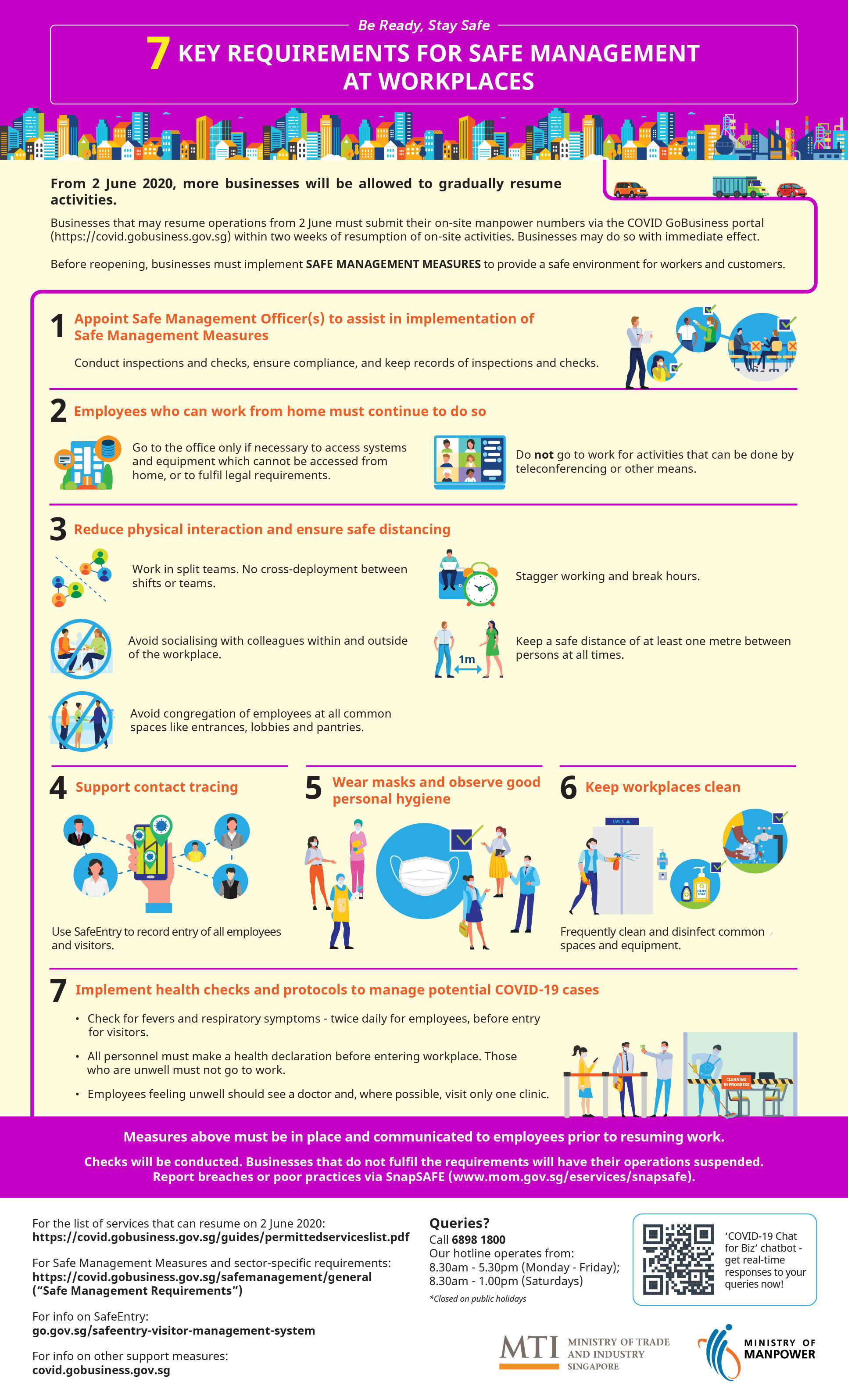Work from home to be the default mode of work in Singapore

As the Southeast Asian country gears for more relaxations from the lockdown, the Ministry of Manpower says the default mode of working for all companies - including those allowed to resume operations in Phase 1 and later Phase 2 - is working from home.
"They should go to the office only where there is no alternative, like if they need specialised equipment that can't be assessed from home."
In case of exceptions, companies should be able to show why staff who return are unable to work from home. Here are some key highights from the latest guidelines for the world of work:
Actively enable employees to work from home
Working from home must be the default mode of working (including companies resuming operations in Phases One and Two). Employees who have been working from home so far must continue to do so, and go to the office only where there is no alternative
- For employees who are still unable to work from home, employers should review work processes, provide the necessary IT equipment to employees and adopt solutions that enable remote working and online collaboration. Employers are encouraged to leverage technology3 to ensure business continuity and safe management.
- Companies should continue to conduct virtual meetings as much as possible. Physical meetings between employees and with suppliers / contractors must be minimised, e.g. by using tele-conferencing facilities.
- Employers must cancel or defer all events or activities that involve close and prolonged contact amongst participants, e.g. conferences, seminars and exhibitions.
- Companies should pay special attention to vulnerable employees (e.g. older employees, pregnant employees and employees who have underlying medical conditions). Besides enabling them to work from home, employers may also have to temporarily redeploy vulnerable employees to another role within the company.
If the business is resuming operations
To provide a safe working environment and to prevent transmission at the workplace, businesses are required to abide by the nation-wide general guidelines for workplaces issued on 9 May 2020. Businesses should also adhere to the sector-specific guidelines released by the respective agencies.
Further, they also have to follow the guidelines mentioned in list of permitted services, and the corresponding Singapore Standard Industrial Classification (SSIC) codes. The guidelines for services that will be allowed to resume operations in Phase 1 can be found here.
The major sectors to resum work include manufacturing and production facilities, businesses with employees working in offices or selected services such as motor vehicle servicing, air-conditioner servicing and basic pet services.
Here are some key highlights from the guidelines:
- For job roles or functions where employees cannot work from home4, employers must ensure the following precautions are in place prior to resuming operations:
- Stagger work and break hours – to reduce possible congregation of employees at all common spaces, including entrances, exits, lobbies, canteens and pantries.
- Staggered work hours must be implemented over at least three 1-hourly blocks, with no more than half of the employees reporting to work within each block. For example, if the normal work hours are from 9am to 6pm, employers could stagger employees to work from 8am to 5pm (40% of staff), 9am to 6pm (20% of staff), 10am to 7pm (40% of staff). Timings of lunch and other breaks must also be staggered accordingly.
- Where possible, work hours should enable more employers to avoid peak-hour travel, especially if employees require the use of public transport.
- If it is not feasible to implement staggered work and break hours due to operational reasons (e.g. manufacturing production line activities), employers must implement other systems to reduce congregation of employees at common spaces5.
- Implement shift or split team arrangements: For suitable workplace settings, employers must split employees at workplace premises into teams, with each team restricted to one worksite wherever possible. No employee should work in more than one team or worksite.
- No cross-deployment or interaction between employees in different shifts, teams or worksites, even outside of work. Employers must ensure clear separation of employees on different shifts or split teams, such as implementing human traffic management measures and stepping up cleaning of common areas during shift or split team changeovers.
- If cross-deployment cannot be avoided (e.g. due to the nature of the job), additional safeguards must be taken to minimise the risk of cross infection.
- There is also restriction on social gathering. Employers must ensure that employees do not socialise or congregate in groups at the workplace, including during meals or breaks. Employees should have meals or breaks on their own.
- Lastly, other basics like wearing masks, sanitizing workplace, and maintaining personal hygeine should also be taken care of.
You can find all the requirements for safe management measures at the workplace here.

Infographic featured in gobusiness.gov.sg
Based on how things go in the phase one of resuming work and life to normal, the plan for phase two will be put in place. National Development Minister Lawrence Wong said that if infection rates remain low and stable, the further easing of circuit breaker measures under the second phase could take place before Jun 30.
Image Credits: Yahoo Singapore















